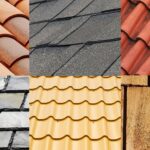Steel frame trusses have become a cornerstone of modern construction, offering significant advantages over traditional materials like timber. As builders and architects continue to prioritize strength, durability, sustainability, and cost-effectiveness, steel has emerged as a preferred choice. In this blog, we’ll explore the many benefits of steel frame trusses, illustrating why they are a top choice in contemporary building projects.
1. Unmatched Strength and Durability
One of the primary reasons steel frame trusses are widely used in construction is their exceptional strength. Steel is renowned for its load-bearing capacity and ability to withstand high levels of stress, making it ideal for large structures like commercial buildings, bridges, and industrial facilities. Unlike timber, steel does not warp, crack, or shrink over time, ensuring that the structural integrity of the building remains intact for decades.
Steel trusses also offer superior durability. They are resistant to pests such as termites and other insects that can wreak havoc on wooden structures. Additionally, steel is non-combustible, meaning it does not catch fire, which enhances the fire safety of the entire structure. This durability leads to longer-lasting buildings that require less maintenance and repair, translating into cost savings over time.
2. Flexibility in Design
Steel frame trusses provide a high degree of flexibility when it comes to design. Thanks to the material’s strength, architects can create expansive, open spaces without the need for numerous supporting columns or load-bearing walls. This flexibility is especially beneficial in modern construction projects, where open-concept designs are often desired in commercial spaces, residential homes, and industrial buildings.
Moreover, steel trusses can be fabricated in a wide range of shapes and sizes, allowing for the construction of unique architectural designs that might not be feasible with traditional wood trusses. Steel’s versatility also extends to roof designs, making it easier to create complex, multi-pitched roof structures that add aesthetic appeal and functionality.
3. Faster Construction Times
Time is a crucial factor in construction projects, and steel frame trusses offer a distinct advantage in reducing construction times. Steel trusses are prefabricated off-site, meaning they are manufactured in a controlled environment to the exact specifications required for the project. Once delivered to the construction site, they can be quickly assembled and installed, saving valuable time during the build phase.
The precision involved in prefabrication ensures that the trusses fit perfectly when they arrive, reducing the likelihood of costly on-site adjustments or delays. Additionally, because steel trusses are lighter than concrete or masonry alternatives, they can be lifted into place more easily, reducing labor costs and streamlining the overall construction process.
4. Sustainability and Environmental Benefits
Sustainability is a growing concern in the construction industry, and steel frame trusses are a highly eco-friendly option. Steel is 100% recyclable, which means that at the end of a building’s life, the steel components can be reused in new construction projects without a loss of quality. This helps reduce the demand for raw materials and minimizes waste, making steel a key player in the movement toward greener construction practices.
In addition, steel frame trusses are more energy-efficient compared to traditional materials. Steel structures are better at insulating buildings, reducing heat transfer, and minimizing the need for excessive heating or cooling. This results in lower energy consumption and contributes to a building’s overall energy efficiency.
5. Cost-Effective Over Time
While steel trusses may have a higher upfront cost compared to timber, the long-term savings they offer make them a cost-effective choice in modern construction. The durability and low maintenance requirements of steel mean that owners spend less on repairs and replacements over the building’s lifespan. Steel’s resistance to environmental factors such as moisture, pests, and fire significantly reduces the potential for damage, lowering repair costs.
The speed of installation also adds to the cost-effectiveness of steel frame trusses. The shorter construction timeline means reduced labor costs, and since the trusses are prefabricated, there is less risk of costly delays caused by weather conditions or on-site issues. Over time, the initial investment in steel frame trusses pays off with lower maintenance, repair, and operational costs.
6. Superior Resistance to Environmental Factors
Steel frame trusses excel in resisting a variety of environmental factors, making them ideal for use in areas prone to extreme weather conditions. Steel can withstand high winds, heavy snow loads, and seismic activity much better than traditional building materials. This resistance is particularly important in regions that experience hurricanes, tornadoes, or earthquakes, where buildings need to remain structurally sound in the face of natural disasters.
Furthermore, steel does not absorb water like timber, reducing the risk of mold, mildew, and rot. This makes steel frame trusses especially useful in areas with high humidity or frequent rainfall, where moisture-related damage is a concern.
7. Precision and Consistency
In construction, precision is key to ensuring the quality and safety of a building. Steel trusses are manufactured to exact specifications, ensuring that each component is uniform and meets strict quality control standards. This level of consistency is difficult to achieve with natural materials like wood, which can vary in strength and quality.
The precision of steel also allows for better integration with other building systems, such as HVAC, electrical, and plumbing. With pre-engineered spaces for these systems, installation becomes more efficient, and there is less risk of interference between the structural components and building services.
Conclusion
Steel frame trusses have revolutionized modern construction by offering a range of advantages that make them a superior choice for builders and architects. From their unparalleled strength and durability to their flexibility in design, environmental benefits, and cost-effectiveness, steel trusses provide a smart, sustainable solution for a wide variety of construction projects. As the industry continues to evolve, the role of steel in shaping our built environment will only become more prominent, ensuring that structures are stronger, safer, and more efficient than ever before.



